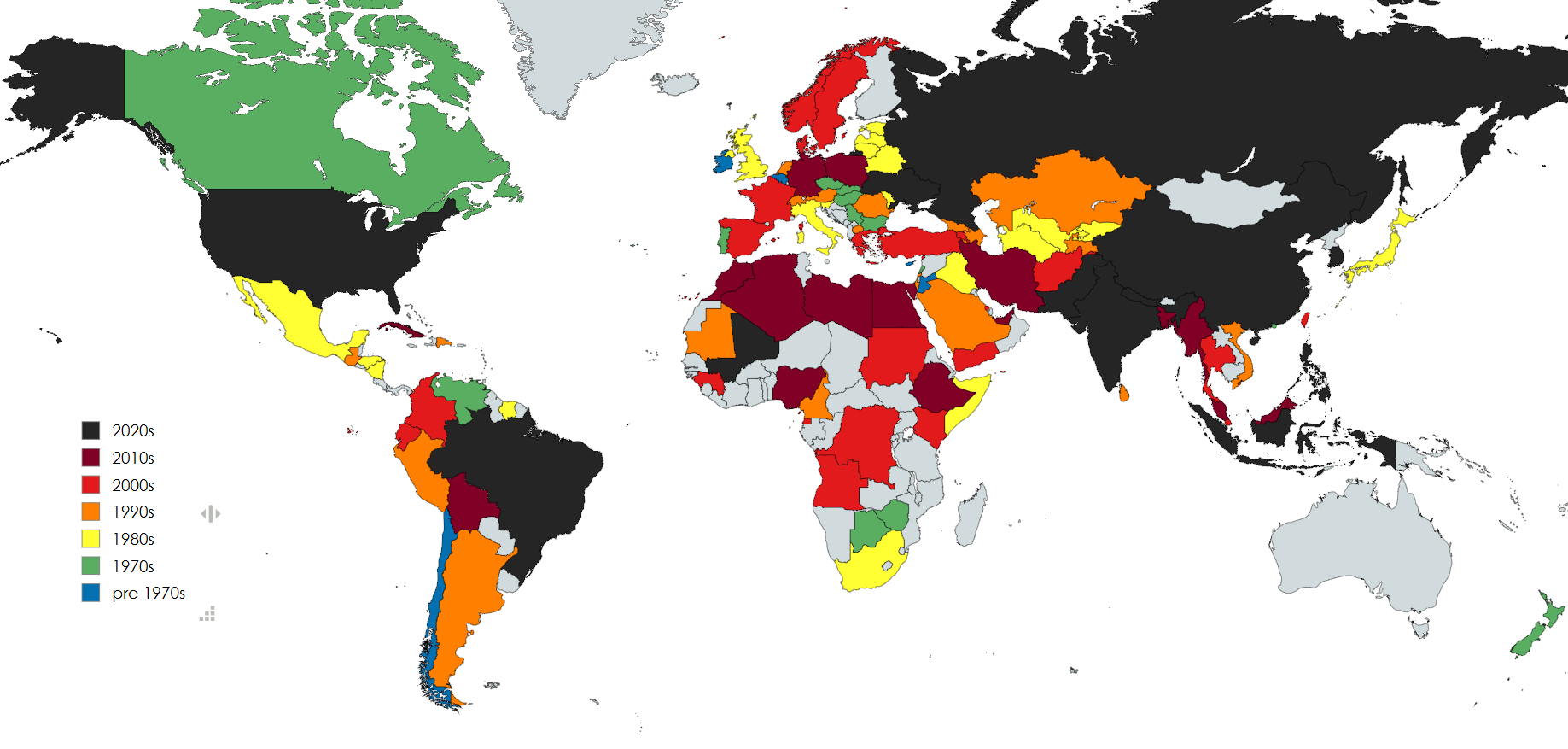Plane Crash Fatalities by Country Map


Alex Cartwright
Senior Cartographer & GIS Specialist
Alex Cartwright is a renowned cartographer and geographic information systems specialist with over 15 years of experience in spatial analysis and data...
Geographic Analysis
What This Map Shows\nThis map visualizes the last occurrence of plane crashes involving commercial carriers in various countries, specifically highlighting incidents that resulted in over 50 fatalities. Each country is marked to indicate the most recent date of such an event, providing a stark reminder of the risks associated with air travel. Plane crashes, while statistically rare, can have devastating impacts on families and communities, and this map serves as a tool to reflect on these tragic events.
Deep Dive into Plane Crashes and their Implications\nPlane crashes have been a significant concern in aviation history, with numerous factors contributing to their occurrence. Understanding the reasons behind these tragic incidents is crucial for improving aviation safety. Interestingly, the safety of air travel has improved dramatically over the past few decades, leading to fewer fatalities overall. However, when a plane crash does occur, the consequences can be catastrophic, often resulting in a loss of life that is felt across the globe.
The aviation industry has seen significant advancements in technology, pilot training, and air traffic control systems, which have contributed to a decline in accident rates. According to the International Air Transport Association (IATA), the global accident rate for commercial flights has reached an all-time low. However, certain regions still face greater risks. Factors such as weather conditions, geographical challenges, and the operational capabilities of airlines in specific countries play a crucial role in aviation safety.
For example, regions with less developed aviation infrastructure, such as parts of Africa and South Asia, tend to have higher accident rates. Countries like the Democratic Republic of the Congo and Nepal have experienced notable crashes due to a combination of challenging terrain and aging fleets. In contrast, advanced economies like the United States and European nations generally report lower incidence rates, thanks to stringent regulatory frameworks and modern aircraft technology.
Moreover, human factors, including pilot error, maintenance issues, and air traffic control errors, still contribute to many accidents. The complexity of modern aircraft systems requires highly trained personnel, and lapses in this training can lead to catastrophic outcomes. Interestingly, many recent crashes have been linked to mismanagement or lack of adherence to safety protocols rather than equipment failure.
In summary, while the aviation industry continues to strive for safety, the reality remains that certain regions are at higher risk, and understanding these dynamics can help improve safety measures globally.
Regional Analysis\nWhen analyzing the map, we can observe notable regional variations in the frequency and recency of fatal plane crashes. For instance, in North America, the last significant crash involving a commercial carrier occurred several years ago, reflecting the robust safety measures in place. Interestingly, the U.S. has not experienced a commercial passenger jet crash with significant fatalities since 2009, a testament to the industry's commitment to safety.
In contrast, regions such as Southeast Asia have witnessed more recent incidents. Countries like Indonesia and the Philippines have experienced several crashes in the last decade, often attributed to challenging flying conditions and regulatory challenges. The last fatal crash recorded in Indonesia, for example, involved a Lion Air flight in 2018, which tragically resulted in 189 fatalities.
In Europe, the situation is somewhat mixed. While Western European countries typically have excellent safety records, Eastern European nations may still struggle with outdated aircraft and infrastructure. The last major crash in Eastern Europe involved a Polish airline in 2019, raising questions about the need for modernization in the aviation sector.
Significance and Impact\nUnderstanding the dynamics of plane crashes is essential not only for improving safety protocols but also for informing passengers about the risks of air travel. The emotional toll of these crashes cannot be overstated; families and communities are forever changed when a loved one is lost to an aviation accident. Moreover, these incidents often lead to scrutiny of airline practices and regulatory oversight, pushing for reforms that can enhance safety.
As we look to the future, the aviation industry faces challenges, including the integration of new technologies and the need for continuous training of personnel. Additionally, climate change poses a new set of risks, with changing weather patterns potentially affecting flight safety. Have you noticed that as air travel becomes more accessible, the importance of safety measures cannot be overstated? The implications of these trends are significant, and they underscore the need for ongoing vigilance in the pursuit of safer skies.
In conclusion, this map not only serves to highlight the locations and dates of tragic airline accidents but also prompts a broader conversation about the importance of safety in the aviation industry. By continuing to improve training, regulations, and technological advancements, we can work towards a future where air travel is not only more accessible but also safer for everyone involved.
Visualization Details
- Published
- September 28, 2025
- Views
- 44
Comments
Loading comments...